People
‘Act First and Then Think’: Artist Angel Otero on How to Turn Failure Into Fuel for Creativity
We visited the artist at his Brooklyn studio on the occasion of his new show at Lehmann Maupin.

We visited the artist at his Brooklyn studio on the occasion of his new show at Lehmann Maupin.

Taylor Dafoe

Early in his career, some critics lumped Angel Otero in with the “zombie formalists” who were running rampant at the time with their decorative abstract aesthetic, often made by atypical means. Otero, too, makes abstract paintings in a process-based practice that involves layering, scrapping, and scrunching oil paint across canvases. But anyone who visits his newest exhibition, “Milagros,” on view through April 20 at Lehmann Maupin, will see how he’s distinguished himself from that group by pushing his process to new ends—and establishing a new emotional resonance along the way.
Painting atop plates of plexi-glass, Otero references canonical works of the past—a de Kooning-like woman, for instance, or a scene from Stuart Davis—and incorporates trimmings from his own paintings, including some that he showed at the Bronx Museum in 2017. He then scrapes the dried paint off in sections (which he calls “skins”), cut them up, and collages them together in draping, free-form compositions that look, from a distance, like someone ate an abstract expressionist canvas and vomited it back out.
That sounds like an insult, but it’s not. In fact, the paintings are quite smart. After all, what is art today if not a regurgitation of previous styles and ideas? For Otero, it’s about something slightly different: memory. It’s an exercise in cobbling together fragmented bits and pieces of previous paintings to create something that is both a facsimile of the past and a wholly new creation unto itself.
On a recent day this spring, artnet News visited Otero in his spacious Brooklyn studio, which used to belong to his friend and neighbor, the artist Rashid Johnson. Wearing all white, he talked about his complex process and his desire to open a studio in his home county of Puerto Rico. He joked with his assistants and took phone calls in English and in Spanish. A handwritten note on a wall behind him read: “Memory is always present, not past.” 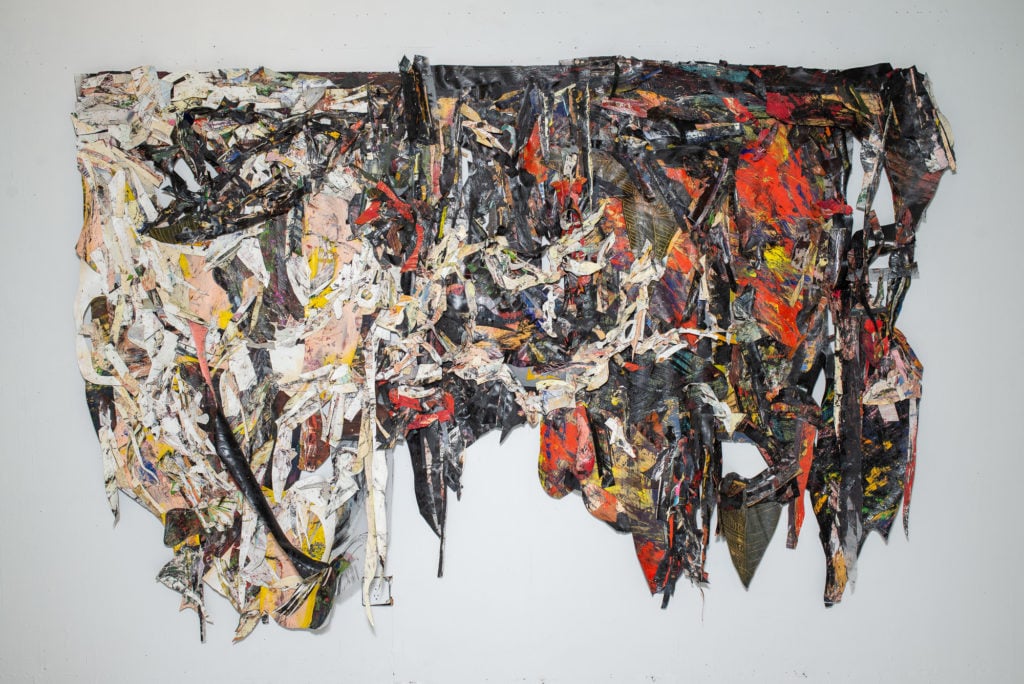
A work in progress at Otero’s studio. Photo: Taylor Dafoe.
Your exhibition at the Bronx Museum in 2017-18 seems to have marked a significant shift for you. It was the first time you presented paintings composed of collaged “skins.” Your current show at Lehmann Maupin is comprised of even more complicated versions of that type of work. How your process has evolved into that?
I have to go back to three years before the Bronx show. There came a moment in the studio where I had been making a body of work for some time and it was starting to feel a little systematic, like I was making work from a comfortable position. I wasn’t feeling that extra challenge that I’m constantly striving for in terms of materiality and process. For some time, I had accumulated all these pieces of old paintings that I had scraped off after I considered the works to be unsuccessful. Even though the paintings didn’t work, I felt like the material didn’t need to be discarded; it could be something that I could use in the future. That’s something I tend to do a lot with what you might consider “failure moments” in the studio—I turn them into something productive.
At that time, I was tired of the canvas and the frame, and I knew I wanted to embrace something more sculptural without departing from the conversations about painting I usually have with the work in the studio. So, I brought all these scraps and leftovers to the studio floor, spread them all around, and literally started cutting shapes and making compositions with them. That was my first impulse. That’s the way I tend to work in the studio: act first and then think, rather than the other way around. Eventually, things started looking pretty cool and interesting and so I continued down that path. Then I was like, “Well, how am I going to put these together? Am I going to sew them, are they going to be on a panel?” I had no idea. I did know that I wanted them to feel movable, though, almost like a piece of fabric. That’s when the stapling technique came about.
After the Bronx Museum show, I again had all these tiny leftover skins that I didn’t want to throw away. That’s how these new, more intricate works were created. I wanted each skin to feel the way individual brush strokes feel to me when I’m painting.
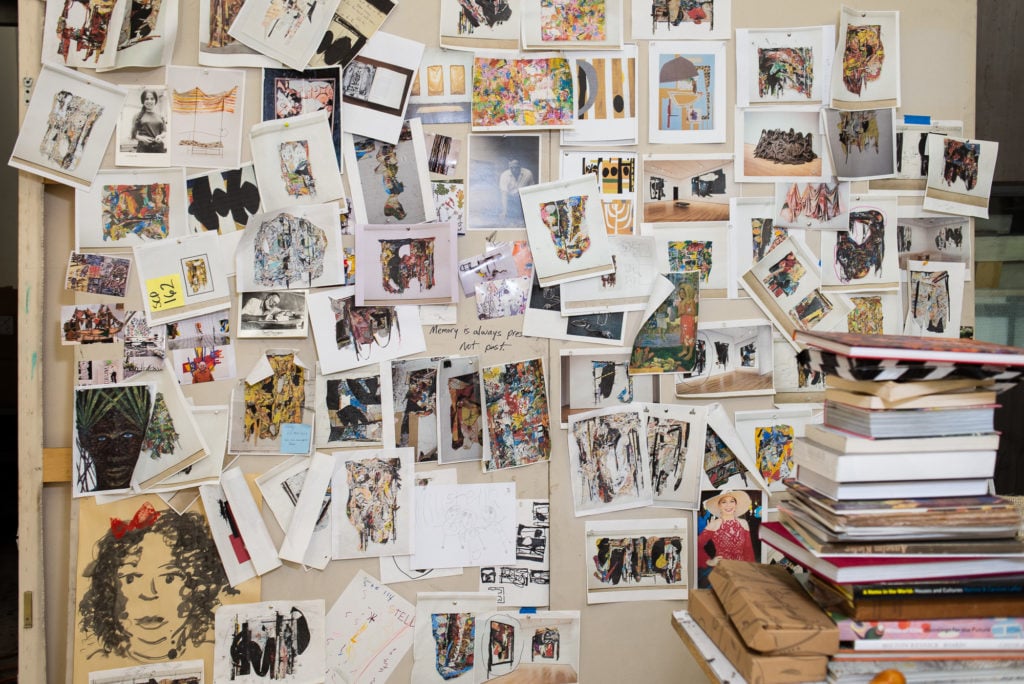
Details from Otero’s studio. Photo: Taylor Dafoe.
Memory has long been a theme of your work, but it feels particularly resonant with this new exhibition. How does the idea of memory inform this body of work, especially compared to previous ones?
I’m not sure. Early on, I did a lot of figurative painting that referenced growing up in my grandmother’s house. In this case, I wasn’t really trying to reference specific memories like I had in those previous works. Instead, I was embracing memory as a universal language. I was thinking about how these works, through the process of their making, took me back to many old thoughts and recollections. I’m not trying to reinterpret a specific memory, but rather embrace the idea of it.
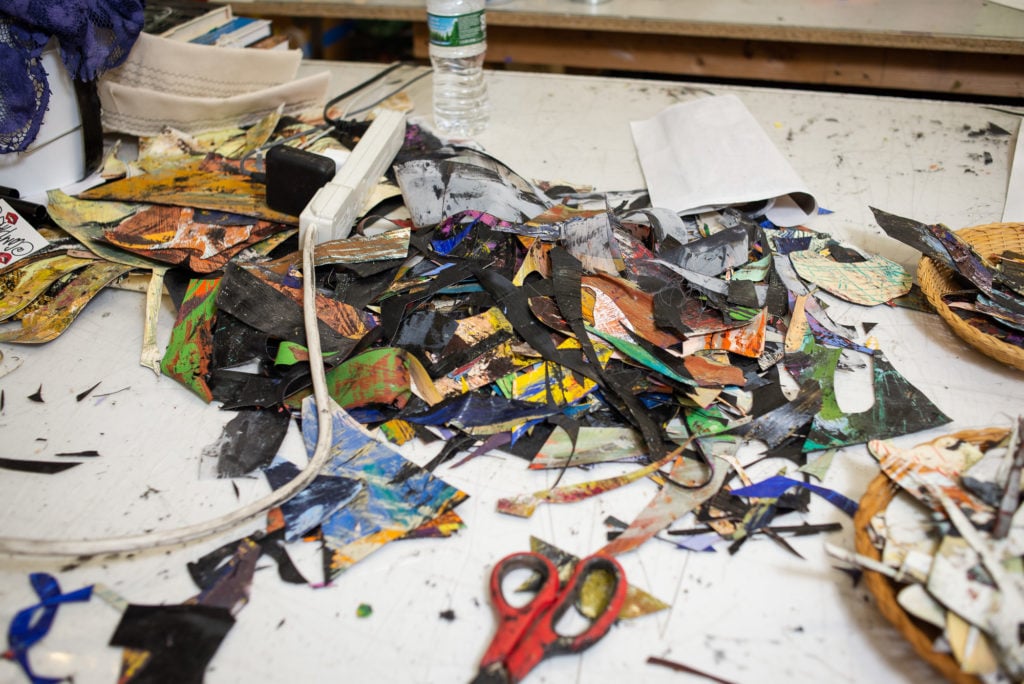
Details from Otero’s studio. Photo: Taylor Dafoe.
The title of the show, “Milagros,” is named after religious charms found throughout Latin America. Is that connected to this idea of process as memory?
In a way, yes. As I was arranging these small painting remnants into new pieces, I remembered these little figurines I had in Puerto Rico made of charms called Milagros. I started exploring that and thought, “Oh, this is interesting—all these charms, each one representing different hopes desires and expectations.” I thought it was very beautiful that when you put all these individual objects together, they create this glorious composition.
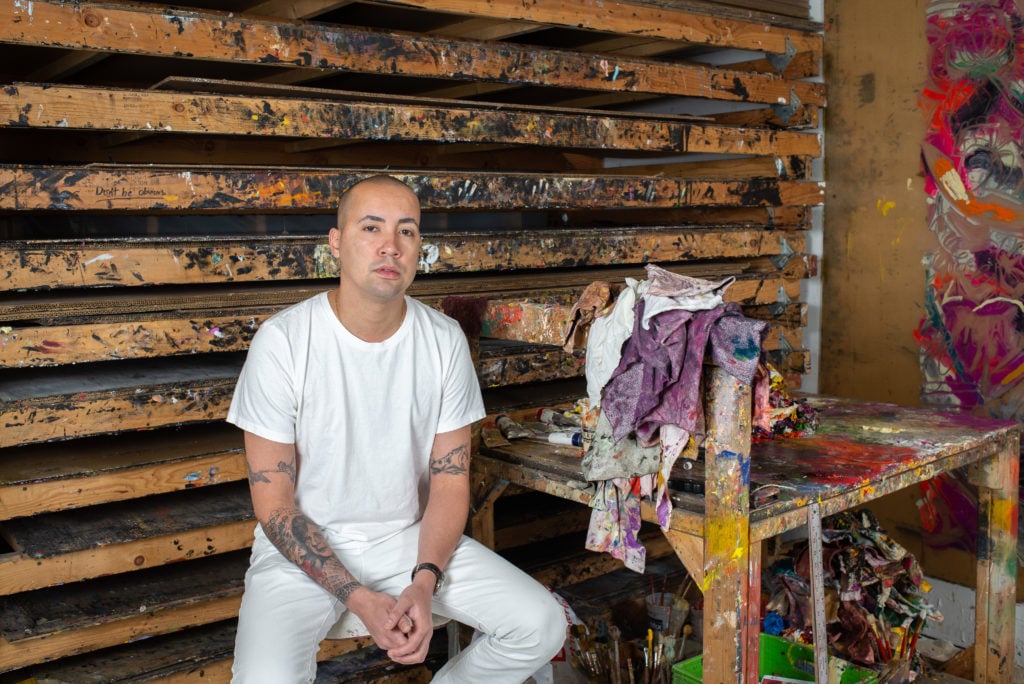
Angel Otero in his studio. Photo: Taylor Dafoe.
Early on in your process, you make base paintings that often reference other abstract artists—de Kooning, say, or Picasso. But as you move along, those initial paintings are scrapped, chopped up, and rearranged. A final composition might include specific gestures to multiple artists or historical works, but they’re abstracted to the point that even the most insightful of viewers would be hard pressed to identify them. Knowing that, why are these initial references important to you?
I’ve always embraced this idea of dancing with the personal and the historical in my work. I’ve used references to a number of from artists from that era—Willem de Kooning, Joan Mitchell, Jackson Pollock, Stuart Davis, and so on. My plan is not to get at what each individual artist or work means to me; it’s a formal decision more than anything else. For me, it’s like the way I choose a paint brush—it’s a kind of tool that I’m reactivating in my own language. My plan is not to reveal them directly; it’s about hopefully finding ways to transform them in ways that people are going to feel but not necessarily recognize.
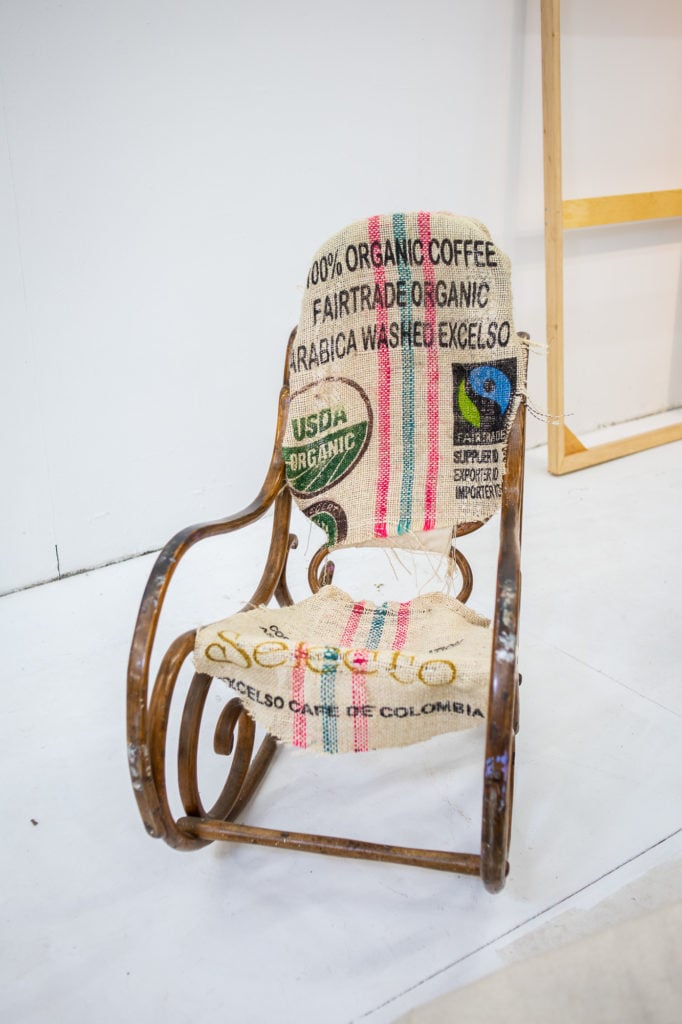
Details from Otero’s studio. Photo: Taylor Dafoe.
You’ve been looking into opening a second studio in Puerto Rico. What’s behind that decision and why is now the right time to do it?
I think it’s a product of where my life is at this moment and a certain aspect about my thoughts of many things in life and me as an individual and me as a Puerto Rican. I just keep going back at it through memory. I’m very curious, first of all, how being on the island will change the way I approach my work. I haven’t lived there since I was really young. I also want to expand the idea of my practice. Rather than just being an artist in a studio making objects that are very personal and intimate, I want to see how I can better interact with people—especially young people—and do something that’s more community based. I’ve never done that before, and I’m not sure how it would work for me. I know I’m good at speaking with students about my own experiences, and I remember others’ words and lessons provided me with experiences I may not have otherwise gotten when I was younger in terms of education and art and looking at the world from different perspectives.
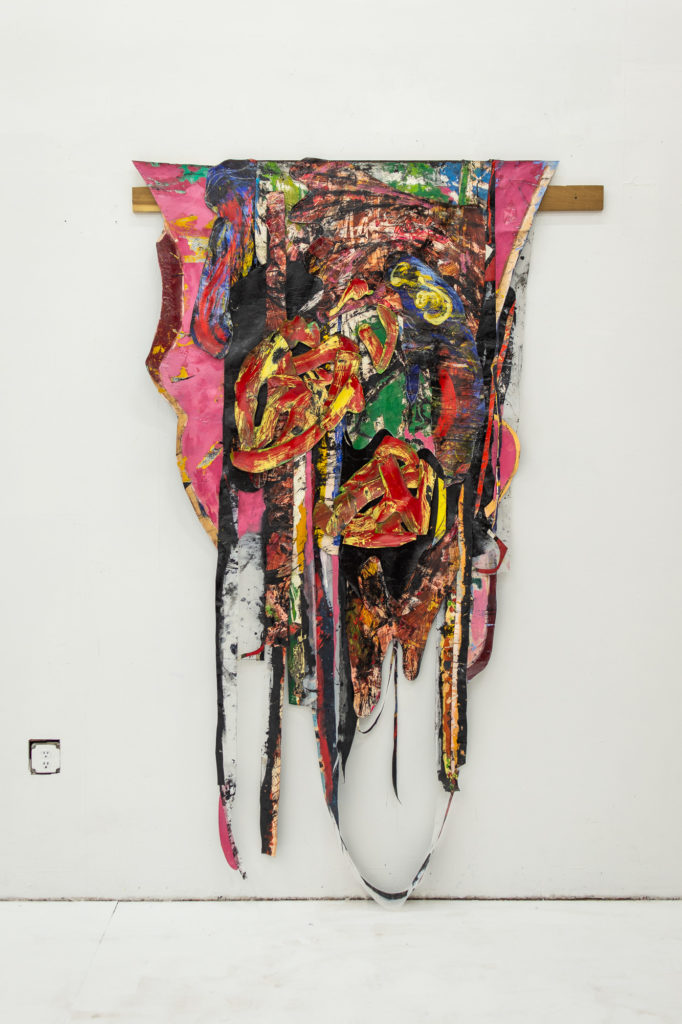
A work in progress at Otero’s studio. Photo: Taylor Dafoe.
What’s your worst studio habit?
I tend to listen to this one specific song almost all day. It’s a song by Bebel Gilberto called “Aganju.” I don’t know why it puts me in the right mood, but it does. The people that help me in my studio hate it because they have to listen to it every day. They’ve started bringing their own headphones so they don’t have to hear it!
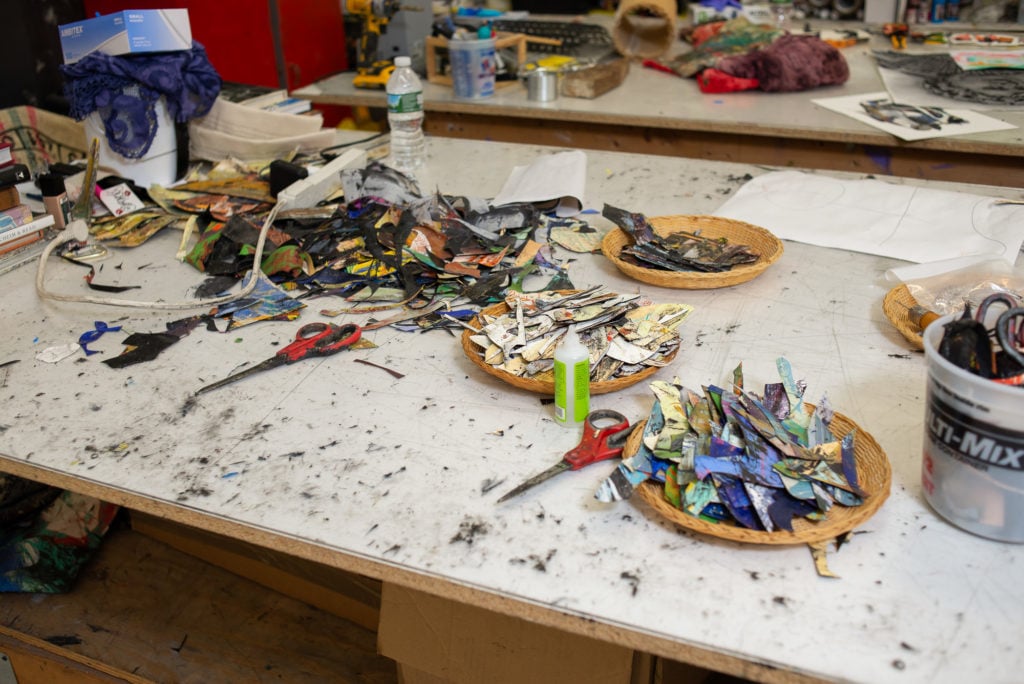
Detail from Otero’s studio. Photo: Taylor Dafoe.
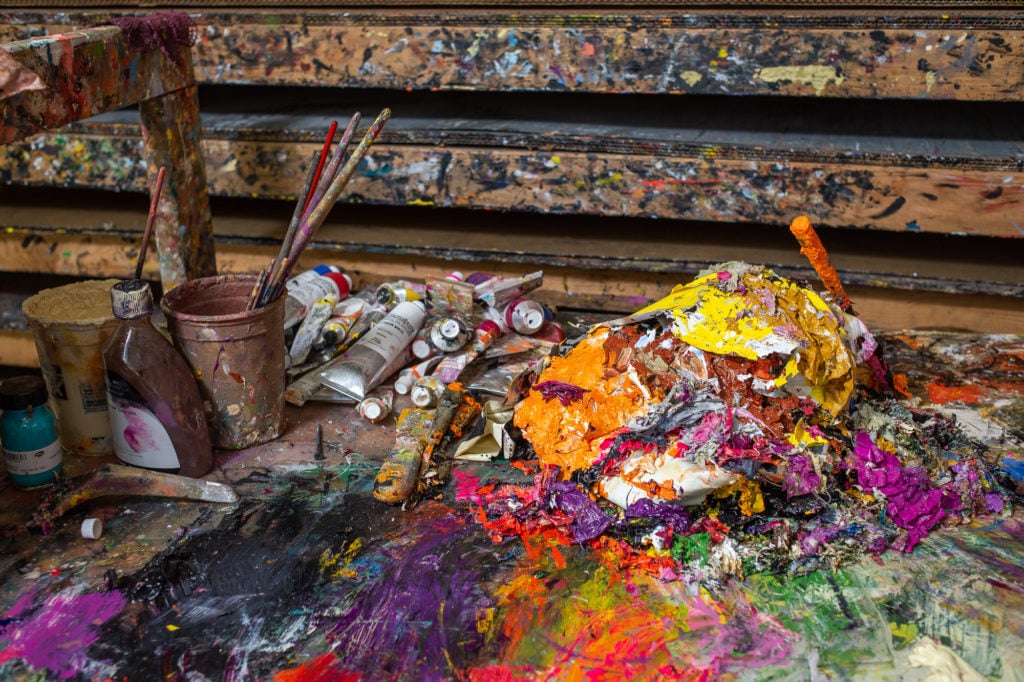
Detail from Otero’s studio. Photo: Taylor Dafoe.
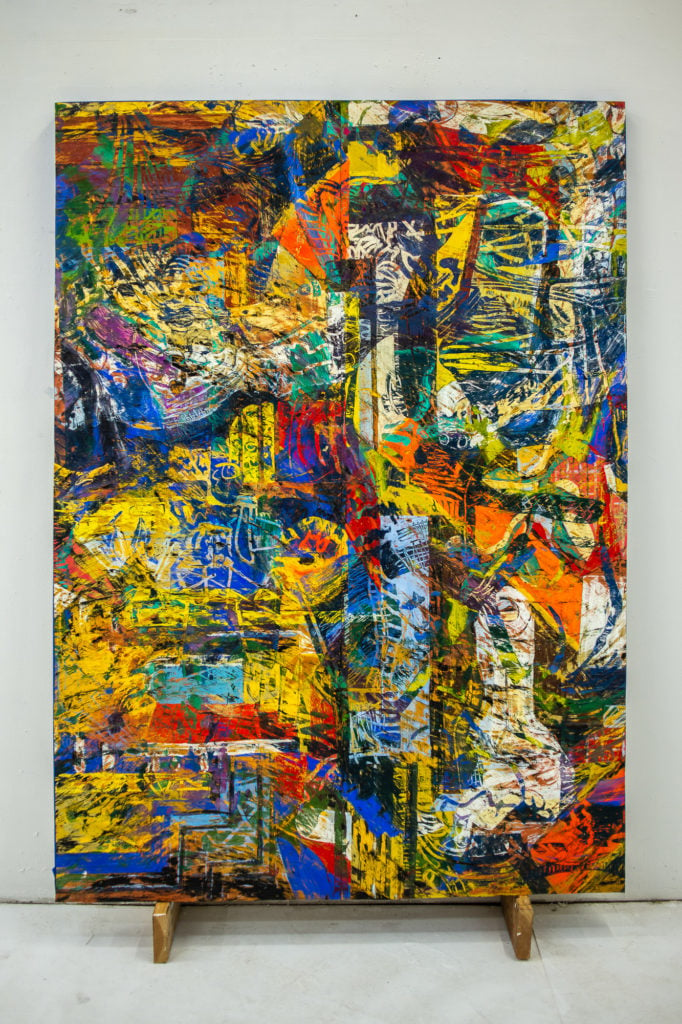
A work in progress at Otero’s studio. Photo: Taylor Dafoe.
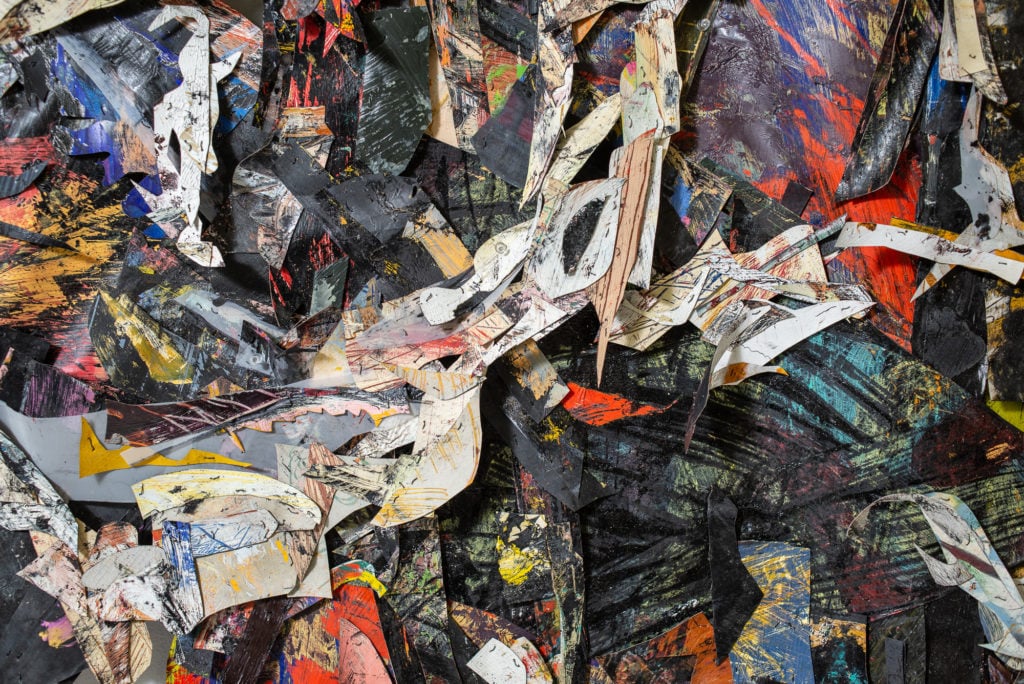
Detail from work in progress at Otero’s studio. Photo: Taylor Dafoe.
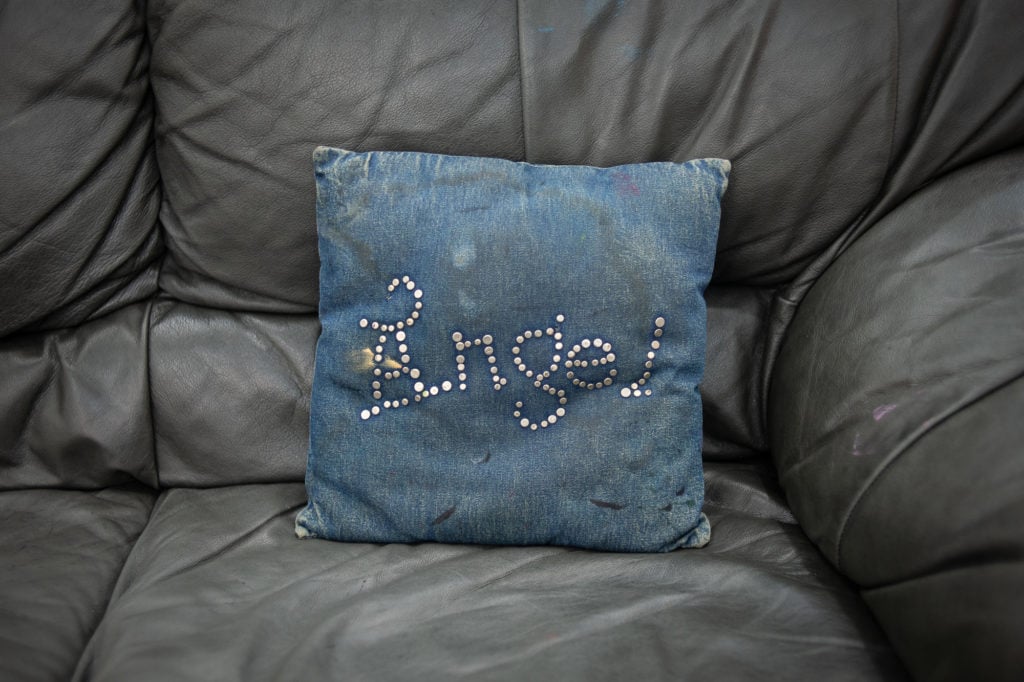
Detail from Otero’s studio. Photo: Taylor Dafoe.
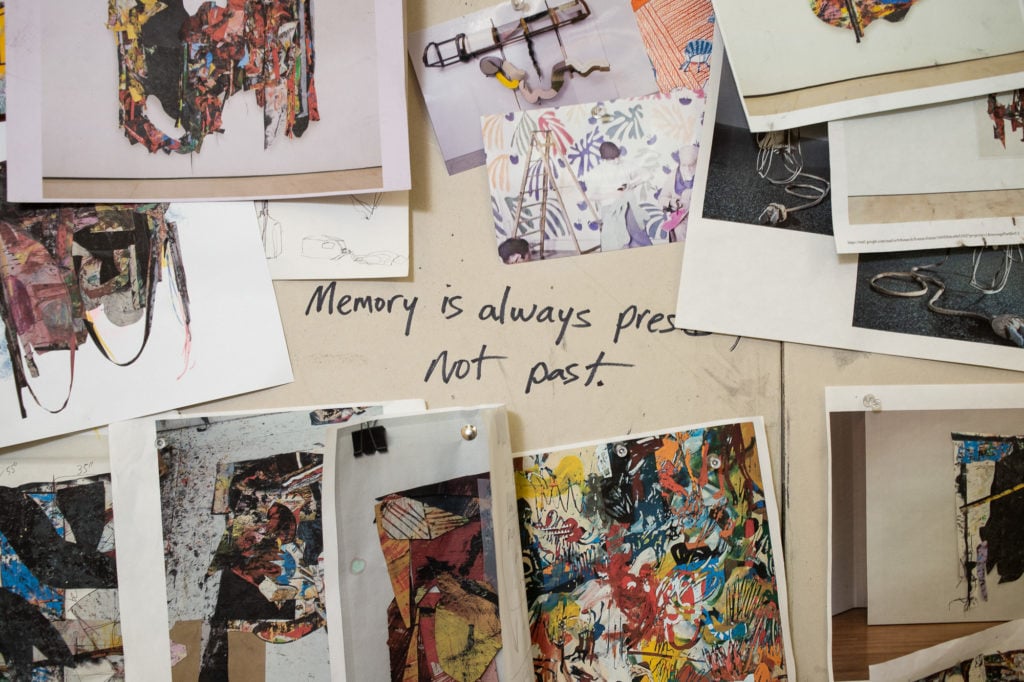
Detail from Otero’s studio. Photo: Taylor Dafoe.
“Angel Otero: Milagros” is on view at Lehmann Maupin through April 20, 2019.